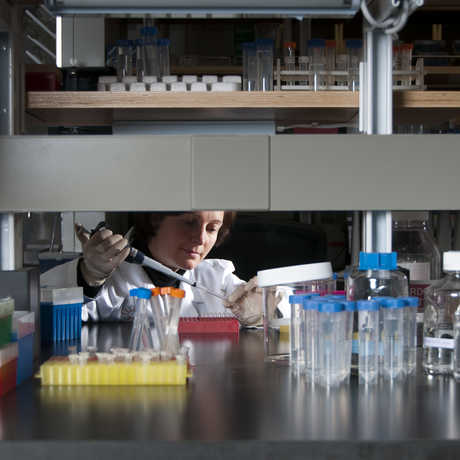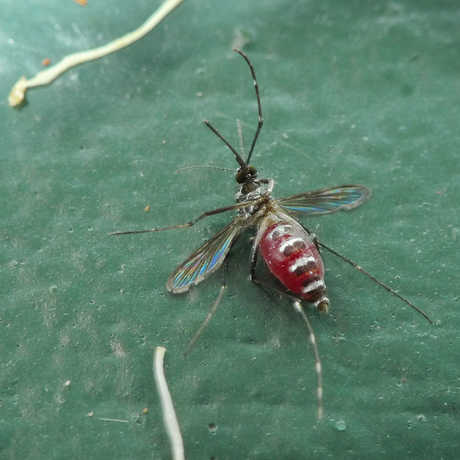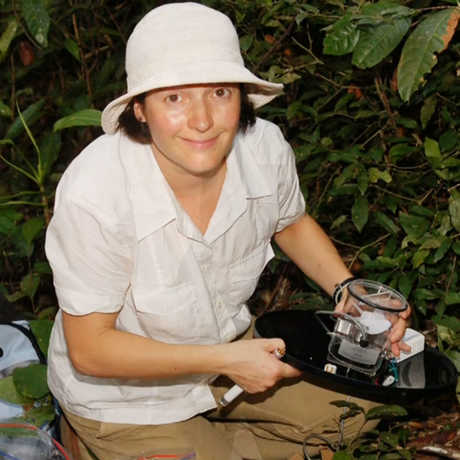Scientist Spotlight
Shannon Bennett
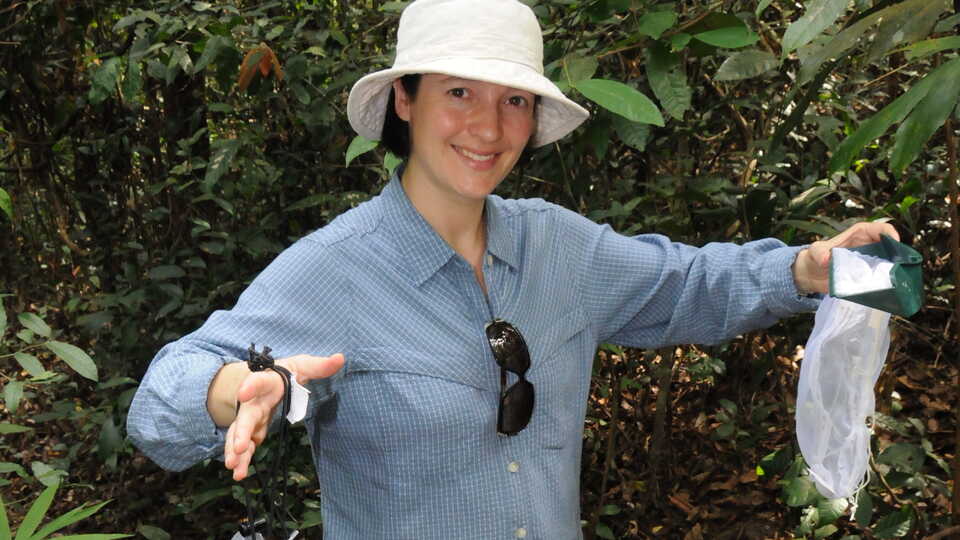
Shannon Bennett is the Chief of Science and Harry W. and Diana V. Hind Dean of Science and Research Collections at the Academy and studies infectious diseases that can be transmitted from animals to humans. While invisible to the naked eye, these microbes have a major impact on global human health, which is why the race is on to understand how they work.
A fateful trip
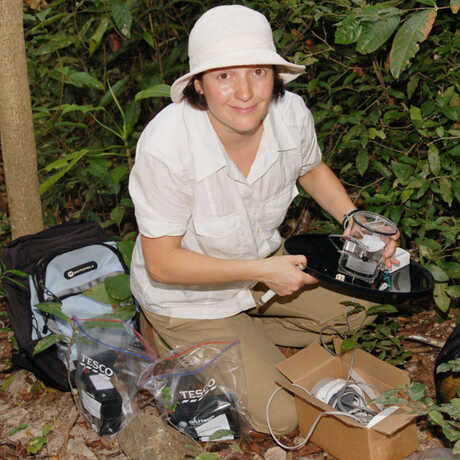
When Shannon Bennett traveled to Africa as an undergraduate to perform educational plays about basic public health issues, she never guessed the experience would launch her lifelong fascination with microbiology.
While in Liberia, she contracted malaria immediately followed by amoebic dysentery, a miserable experience that actually turned out to be a watershed moment for her career. "I caught something that made me extremely sick," she recalls, "and began to ponder ‘Why is this happening? How does it happen? What could make me this ill?’"
After the fevers and cramping subsided, her curiosity remained. Upon returning from Africa, Bennett pursued a degree in parasitology and began learning as much as possible about infectious agents—parasites, bacteria, and viruses. She started big (relatively speaking), studying parasitic nematodes (a.k.a. roundworms) and their diversity and transmission in different fish species. Today, she’s exploring the hidden world of microbes that adversely affect human health, focusing on dengue virus and hantaviruses, and the communities they thrive in.
Dengue evolution
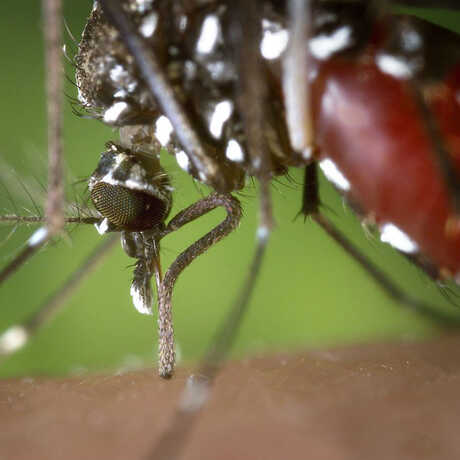
When Bennett peers into a microscope, mosquito trap, or test tube, she sees an evolutionary arms race between virus, host, and vector. Viruses are exquisitely adaptable replication machines. Their strategy: to multiply within a host and reach levels sufficient to be passed on before the host’s immune defenses eliminate them. To survive, the virus must move from host to host, sometimes by way of a third–party species—a vector.
Dengue virus is known to replicate in human hosts, as well as in mosquitoes, the vector which moves the virus from one human to the next. Bennett's mission, in part, is to better understand these relationships and determine whether dengue virus is evolving to become more virulent to humans.
Differences in mosquitoes’ breeding strategies, biting behavior, and host preferences have profound consequences for the control of mosquito-borne diseases. Female mosquitoes don’t bite humans to annoy us, but because they need the nutrients from human blood in order to develop their eggs and reproduce. (Male mosquitoes don’t bite at all—they feed on nectar during their short lives.) Virtually every species of mosquito has a unique lifestyle and their behavior can vary drastically, even among members of the same genus.
Bennett studies the mosquito species most responsible for the spread of dengue, Aedes aegpyti and Aedes albopictus. A. aegypti is particularly good at transmitting human pathogens because it has adapted to feed efficiently on humans. It lays eggs in the man-made containers where humans collect water, bites in the daytime when humans are active, and lives in close proximity to people.
Human health
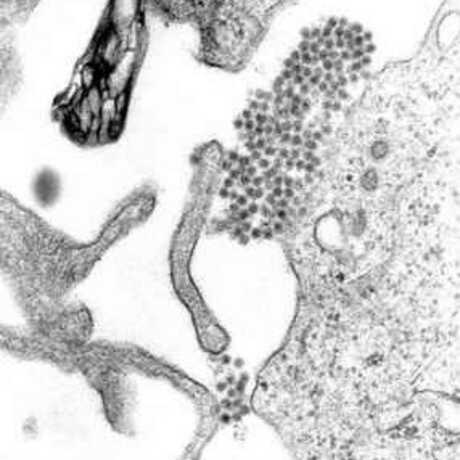
With each infection, the genetic make-up of the virus’ genome can change, so scientists must work quickly to keep up. Bennett extracts a virus’ genetic material from tissues and sequences the virus RNA (another form of genetic information, like DNA) in the Academy's Center for Comparative Genomics laboratory. Those sequences provide clues to understanding where the virus came from, and why the virus occurs in a certain place, or in certain people or populations.
As the human population continues to increase, accompanied by urban growth and global travel, microbiologists like Bennett have their work cut out for them. According to the World Health Organization, not only are the number of dengue fever cases increasing as the disease spreads to new areas, but explosive outbreaks are occurring. There are 50 million dengue infections globally every year, including 500,000 cases of hemorrhagic fever and 22,000 deaths, mainly among children. Billions who have survived a first infection are at increased risk because a second dengue infection is more deadly than the first.
"With the global movement of people and the expansion of the mosquito vectors into new areas, we are seeing more cases of dengue worldwide every year," says Bennett. "The race is on to understand how the virus evolves and spreads under these new opportunities."
Department: Microbiology
Title: Chief of Science and Hind Dean of Science & Research Collections, Patterson Scholar, Associate Curator of Microbiology
Expeditions: Six and counting
Videos:
Trapping Mosquitos
The Life Cycle of Dengue
The Evolution of Microbes
Related Websites:
Shannon's IBSS staff page
Infectious Disease Map
This Week in Virology
As a virologist, Dr. Bennett was in high demand during the COVID-19 pandemic. Explore videos, interviews, articles, and more featuring the Academy's chief of science:
The Department of Microbiology studies living microscopic organisms, non-living viruses, and prions. Meet our curators and researchers and view current and past projects.
